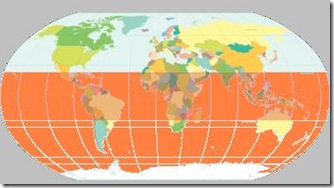# 3339
First, this report on Australia’s ratcheting up of their pandemic alert level, then some discussion about the International response to this virus.
Australia to raise swine flu alert: health minister
Sydney (AFP) June 14, 2009
Australia is set to raise its swine flu alert level as the number of people hit by the pandemic continues to rise, Health Minister Nicola Roxon said on Sunday.
With the national tally at nearly 1,500 cases with seven in intensive care, Roxon said the whole country would soon move to the "sustain" phase in line with hotspot state Victoria.
"As the numbers gradually increase in jurisdictions there will be steps over the coming days to move to a consistent alert level," Roxon said.
"It's inevitable that the disease will spread -- that's the nature of this type of flu -- and we know in most cases it will be very mild and people will recover quite quickly, and often in a number of days and often without any medical intervention," she said.
The "sustain" phase, Australia's second-highest, gives authorities the power to cancel sports events, close schools and restrict travel, although officials say extreme measures such as closing national borders are unlikely.
Some of my readers are no doubt wondering why we are seeing a more extreme response to this pandemic threat by some nations than we’ve seen here in the United States, Canada, and parts of Europe?
India, for example, is mandating hospitalization (isolation) for all swine flu cases. Egypt, based on reports in the Arabic press, seems particularly alarmed. And China has worked feverishly (sorry, I had to) to track down suspect cases and their contacts.
In comparison, the modest number of school closures and the advice to wash our hands and cover our coughs here in the states seems almost lackadaisical.
Why the difference?

The orange shaded areas indicate the Tropics and the Southern Hemisphere – the areas where the H1N1 pandemic virus is expected to spread the most over the next few months.
The first difference is that the virus was introduced into the United States, Mexico, and Canada before we knew what was happening.
While preventing the virus from entering a country is probably an exercise in futility, some nations are working to slow the introduction and spread of swine flu – something that simply wasn’t an option for the US and Canada.
Secondly, this virus bloomed in the northern hemisphere just as our regular flu season was ending. A lucky break for us, since we now have several warm-weather months where influenza is (hopefully) less likely to spread.
Countries like Australia, New Zealand, Chile, and South Africa are just now going into their winter flu season, and so for them, the timing of this pandemic’s arrival is particularly bad.
Third, our schools are letting out for the summer, while schools are in full session south of the equator.
Since school aged children appear more at risk than the elderly with this virus, there are justifiably concerns over how to deal with school closures. Keeping schools open may increase the spread of the virus, but closing them has steep economic and societal costs.
Fourth, there are hundreds of millions of particularly at-risk people, those with existing health issues, living in the tropics and southern Hemisphere.
Millions live in regions with little or no access to medical care, often in crowded, poverty ridden areas.
We keep hearing that between 1% and 2% of H1N1 cases are hospitalized with severe illness, and of some cases requiring a ventilator. In a lot of countries, that sort of medical intervention won’t be widely available.
The pandemic experience in places like India, or South Africa, or Chile is likely to be far different from what we see in the United States or Canada.
And so, particularly in these early days when we don’t really have a good handle on what this virus is capable of doing, it is only natural that some countries will adopt more stringent measures to combat this pandemic.
Whether they will prove effective?
Well, stay tuned.
